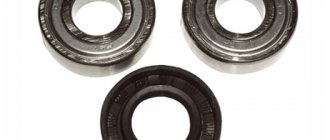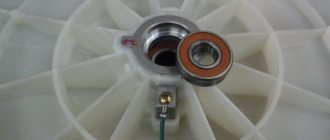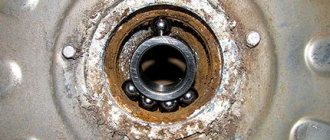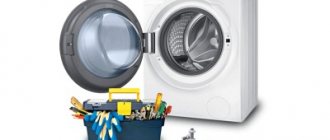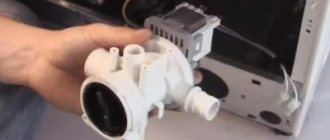Before you figure out how to assemble a socket plug, you need to familiarize yourself with their varieties. In terms of their design features, electrical plugs are not much different from each other. Their main difference may be in design and structure. The most common varieties that are often installed in everyday life are the following models:
Collapsible models are the most popular due to this high functionality and the ability to replace the electrical plug if necessary. Non-separable models have a cast body, so it is not possible to disassemble it. During repairs, the wires must be cut at the base.
Increasingly, European-style sockets are being installed in Russian homes. To ensure a reliable connection and continuous power supply, a plug of the appropriate standard is required.
Every electrical device is a potential threat to human health and life. To prevent possible damage, plugs must be equipped with grounding, which guarantees safety during operation.
However, the forks differ not only in design features. Currently, two types of plugs with type C cords in accordance with GOST are produced on the domestic market. On the non-separable body of each product there must be a marking that lists all technical characteristics - permissible supply voltage, permissible current.
What kind of lighting do you prefer?
Built-in Chandelier
- C5 is an analogue of European plugs CEE 7-16, they have a round pin with a diameter of 4 mm, which comes down to the free ends, the insulation length is 10 mm from the body. The plug is designed for a load current of no more than 6 A and is not equipped with a grounding contact.
- C6 is also an analogue of the European standard CEE 7-17 plugs, equipped with a round pin with a diameter of 4.8 mm, there are modifications with and without a grounding contact, the plug is designed for a current of no more than 10 A.
In Russia, a large number of devices with cords are used, which are equipped with collapsible C1-B type plugs with a round pin with a diameter of 4 mm, designed for a load current of up to 6 A, and there is no grounding contact.
Expert opinion
Viktor Pavlovich Strebizh, lighting and electrical expert
Any questions ask me, I will help!
In such buildings there are no grounding systems, and at the time of the construction of these structures, there were no household appliances that consume a lot of electricity and were intended for placement in bathrooms. If there is something you don’t understand, write to me!
How to change a plug on a wire: video, photo, instructions.
- Replacement begins with dismantling the old Euro plug and removing the outer sheath from the wire. At least 5 cm is removed from the end.
- Each wire core is stripped approximately 15 mm. This length will be sufficient to connect wires in a European-style design.
- All bare wires are cut so that the length of the bare wires is no more than 10 mm. This is enough to replace the plug with a new one yourself.
- To ensure reliable contact, you need to bend the ends of the wires using pliers.
- The next step is to properly connect the wires. Most cords have three wires. Brown – phase, yellow or green – ground, blue – zero.
- To prevent the plug from wobbling, it must be firmly fixed by clamping the wire with a plastic jumper.
- The final stage is to assemble the working mechanism and check its functionality.
DIY tutorial: how to make an extension cord. Easier than it seems!
For most people, a country house is not only a vacation spot. Fixing a roof, putting up a fence, washing a car, mowing the grass on the property is a lot of work! And after work it would be nice to take a shower, have lunch, and watch a movie. It sounds good. But in reality, the power cords of equipment and tools are not enough to reach a fixed outlet. And besides, those few power sources are already occupied by basic household appliances.
An extension cord will help you! However, ready-made carriers are expensive and are not always ideal in length and power. You can make an extension cord yourself - there is nothing complicated about it. And most importantly, you will be confident in the quality of the chosen materials and the integrity of the assembly. We will tell you how to calculate the load and wire cross-section. In the steps we will describe the assembly process in detail. And you will find all the necessary parts and accessories on our website.
Design features
The design of electrical plugs is divided into several types. You need to familiarize yourself with the technical characteristics, advantages and disadvantages of each in more detail.
Non-removable fork device
The design features of non-separable modifications are the same everywhere. The pins are installed at intervals of 19 mm into a strip made of plastic; conductors are pressed into it. The bar is equipped with two protrusions, the purpose of which is to guide the wire. The bypass is important because it eliminates the possibility of the plug cord breaking if significant force has been applied to it.
The wire and pins are filled with molten plastic. This is ensured by a high degree of tightness of the case with the power cord securely fixed in it.
Device of a collapsible three-pole design
Design device type C1-B
This design is incredibly simple in its implementation. It consists of two halves of a plastic body, two brass pins, fasteners and a clamping bar.
Design features of the collapsible structure type C6
If the power cord is broken
Most often, a burnt out or melted plug is only the result of a short circuit that has occurred, and the source of the problem lies in something completely different. For example, in a broken power cord. The power cable suffers after being crushed by a heavy object or externally damaged by a snag on a sharp nail or corner. Therefore, we are not in a hurry to disassemble the adapter, but carefully inspect the surface of the wire for cracks, bends or burn marks.
Sometimes a quick external examination is not enough to identify internal damage, since the insulation layer hides the break of one of the conductors into two parts.
The easiest way to check the integrity of the cord is to use a multimeter. You just need to find the tester, switch it to “Buzzer” mode and ring the cable. If the device detects a current leak, a high-pitched squeak will be heard.
If it is necessary to test a chain longer than two meters, then an additional wire should be prepared and included in the overall circuit. When there is no spare conductor, there is another option - to twist the phase and zero at one end of the wiring. Next, connect the multimeter probes to the nearest contacts. This option has several advantages over the first one:
- you can check for leakage two wires connected in series into a single circuit at a time;
- there is no need to look for a compatible conductor and expand the circuit.
If you don’t have a multimeter at hand, you can verify the integrity of the conductor using a special homemade universal device. To make it you will need a 3.5 Volt Ilyich light bulb, a power battery (preferably a square one with a power of 4.5 Volts), two connecting wires and a gripping connector. We connect all the elements in the following sequence:
- connect a light bulb to the “plus” of the battery;
- We connect a flexible conductor with an alligator clip to the negative of the battery.
When working with high voltage, remember safety precautions, especially if there is a risk of current leakage.
It is better to first test the resulting device on an already familiar and working section of the network. It is enough to hook the clamp anywhere, and if the circuit is assembled correctly and current flows into the wire, the light bulb will light up. If there is no glow, we make a logical conclusion that there is a leak or a wire break.
If there are doubts about the integrity of the cord and plug or there are obvious traces of melting and burning, immediate action must be taken. Knowing what to do first and how to make repairs, you can protect your life, health and property.
Interesting:
- The plug on the washing machine melted
- Ardo washing machine does not turn on
- There is a smell of burnt wiring when the washing machine is running.
- How to change the power cord of a washing machine?
- Washing machine socket installation height
- The washing machine does not start and the indicators do not light up
1 reader comment
- 08/11/2021 at 22:07
Lena:
Changed the plug. The machine stopped working. But it turns on. What does it mean?
Answer
Complex fork methods + formula
The complexity of the method lies in the fact that such an event is quite difficult to track. Firstly, it is quite difficult to find arbs in a line, since it is necessary to monitor several lines of different bookmakers at once. Once found, it is necessary to quickly place bets on opposite events, since bookmaker analysts carefully monitor the odds.
- Win 1 / Win 2, the sport where there are no draws is suitable;
- Total even/total odd, even or odd number of points, goals or other indicators depending on the sport;
- Total less / total more, more or less number of game indicators of a team or athlete;
where: S1 – quote for an event in 1 BC, S2 – quote for an event in 2 BC. If P is less than one, then we can conclude that the fork is profitable, so you can place bets.
Expert opinion
Viktor Pavlovich Strebizh, lighting and electrical expert
Any questions ask me, I will help!
Modern models of washing machines do not impose any special requirements on their location; they can be installed even in the living room, as long as the supply of appropriate utilities is provided. If there is something you don’t understand, write to me!
Is it possible to take it apart?
Before you repair a socket plug, you need to understand whether it can be disassembled or not.
There are several types of collapsible forks. Unfortunately, there is no single global standard for such devices, and this causes a lot of problems. For example, you bought a device abroad, you are trying to turn it on, but the pins do not fit in because the distance between them is greater or less than that at which the holes are located at the socket. Or there is an additional rod of an incomprehensible shape, which there is nowhere to stick.
You can use an adapter, but most often in such cases the plug is removed:
- unscrews;
- trimmed.
To repair an electrical plug in this situation, replace the old one with a new one that is suitable specifically for your outlet. Such an operation usually has no effect on the operation of the device.
Socket for a washing machine in the bathroom: installation, location |
- Cancellation of a bet on an event. Cancellation of a bet means equating the bet to odds of 1. This can be avoided if you choose exclusively reliable companies that have already proven themselves.
- The player's own error. An inexperienced player may completely confuse any bets or events. This method requires increased attention from the player. Pay attention to this!
- Change of quotation. Odds can change frequently on certain events, making it difficult to analyze and place a bet on a given event. Experts do not recommend using such events for arbs, since you can place a bet in one bookmaker, while in another company the odds will change.
- Reducing the maximum bet.
Types of electrical plugs
C5
(analogue of European electrical plugs CEE 7/16) - with round pins with a diameter of 4 mm, converging slightly towards the free ends, the pins are insulated to a length of 10 mm from the body, without a grounding contact. The C5 plug is designed for a load current of up to 6 A (with a supply voltage of 220 V it can withstand a power of 1300 W).
C6
(analogous to European plugs CEE 7/17) - with round pins with a diameter of 4.8 mm, there are three-pole with a grounding contact and two-pole without a grounding contact. The C6 plug is designed for a load current of up to 10 A (with a supply voltage of 220 V it can withstand a power of 2200 W).
There are still many devices in use with cords equipped with collapsible plugs type C1-b
with round pins with a diameter of 4 mm without a grounding contact and designed for a load current of up to 6 A (with a supply voltage of 220 V it can withstand a power of 1300 W).
Useful tips Connection diagrams Principles of operation of devices Main concepts Meters from Energomer Precautions Incandescent lamps Video instructions for the master Testing with a multimeter
Comparison of molded and collapsible plugs
The main difference between non-separable and collapsible models is the structure of the body. There are also differences in manufacturing technology. It is cheaper to make a cast, non-separable plug than a collapsible one, which consists of many complex parts. This factor affects the final price of household electrical appliances.
Collapsible models can be removed from one wire and moved to another. If necessary, the forks can be repaired by replacing faulty parts. A collapsible plug is also good because it can be bought and installed on any wire used in everyday life.

